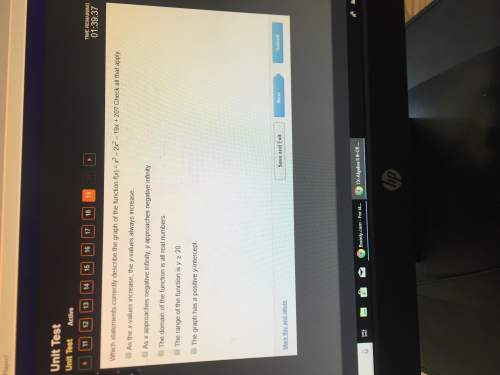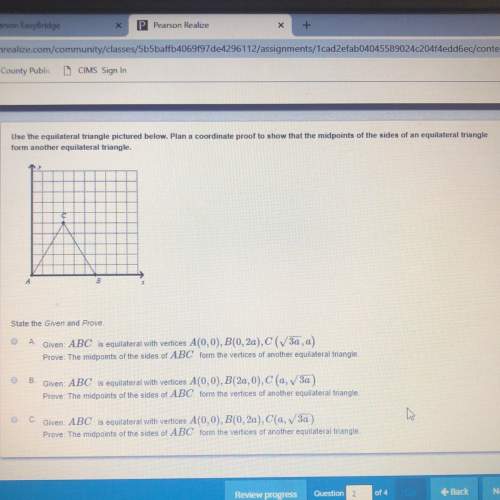An initial amount of $600 is invested in a compound

Mathematics, 05.05.2020 03:38 kitttimothy55
What is the total amount after 2 years?
An initial amount of $600 is invested in a compound
savings account with an annual interest rate of 3.5%.
1. Denne variables
2. Substitute into formula
A = P(1+r)
3. Evaluate
What is the total amount after 4 years?

Answers: 1


Other questions on the subject: Mathematics


Mathematics, 21.06.2019 22:00, nyceastcoast
Percent increase and decrease. original number: 45 new number: 18
Answers: 1

Mathematics, 22.06.2019 01:30, joytheqt305
Arecent study focused on the number of times men and women who live alone buy take-out dinner in a month. assume that the distributions follow the normal probability distribution and the population standard deviations are equal. the information is summarized below. statistic men women sample mean 24.85 21.33 sample standard deviation 5.54 4.93 sample size 34 36 at the 0.01 significance level, is there a difference in the mean number of times men and women order take-out dinners in a month? state the decision rule for 0.01 significance level: h0: μmen= μwomen h1: μmen ≠ μwomen. (negative amounts should be indicated by a minus sign. round your answers to 3 decimal places.) compute the value of the test statistic. (round your answer to 3 decimal places.) what is your decision regarding the null hypothesis? what is the p-value? (round your answer to 3 decimal places.)
Answers: 1

Mathematics, 22.06.2019 01:30, jude40
Asample of 200 rom computer chips was selected on each of 30 consecutive days, and the number of nonconforming chips on each day was as follows: the data has been given so that it can be copied into r as a vector. non. conforming = c(10, 15, 21, 19, 34, 16, 5, 24, 8, 21, 32, 14, 14, 19, 18, 20, 12, 23, 10, 19, 20, 18, 13, 26, 33, 14, 12, 21, 12, 27) #construct a p chart by using the following code. you will need to enter your values for pbar, lcl and ucl. pbar = lcl = ucl = plot(non. conforming/200, ylim = c(0,.5)) abline(h = pbar, lty = 2) abline(h = lcl, lty = 3) abline(h = ucl, lty = 3)
Answers: 3
You know the right answer?
What is the total amount after 2 years?
An initial amount of $600 is invested in a compound
An initial amount of $600 is invested in a compound
Questions in other subjects:

English, 28.07.2021 14:00


Mathematics, 28.07.2021 14:00

Social Studies, 28.07.2021 14:00

Social Studies, 28.07.2021 14:00


Biology, 28.07.2021 14:00

Mathematics, 28.07.2021 14:00

English, 28.07.2021 14:00

Computers and Technology, 28.07.2021 14:00





